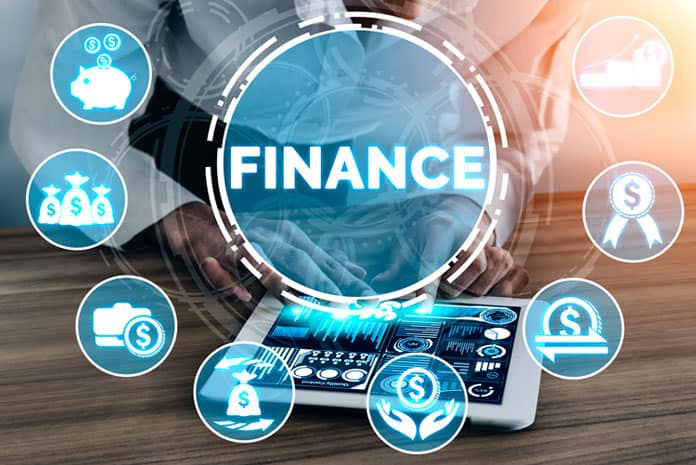Written By: Mayur Modi Co-founder – Moneyboxx
The Central Government has been driving its financial inclusion (FI) mission across India for decades. This refers to the delivery of basic financial services to marginalised sections of society who lack access to such offerings from banks and other financial institutions. Financial inclusion acts as a key driver of balanced and sustained economic growth by ensuring adequate lines of credit are available for weaker sections at a reasonable cost, thereby minimising income equality and poverty.
Financial inclusion is not only an objective in itself but also acts as an enabler for economic growth. These efforts help inculcate a culture of savings among semi-urban and rural cohorts by drawing low-income groups into the formal framework of the banking and insurance segments. Later, this plays a role in boosting national economic development.
Innovation and Collaboration
Despite years of focus on financial inclusion, progress has been steady but relatively slow. While a major percentage of the population has come under the ambit of the formal financial economy, almost 190 million people in India still don’t have a bank account, as per the World Bank’s Global Findex Data. Moreover, 50% of bank accounts are inoperative, indicating these people are utilising cash for daily needs.
Given this scenario, fintech players – those using financial technology – have been offering a faster alternative for FI, compared to brick-and-mortar entities. Broadly, fintech firms use tech-enabled financial innovations that create new business models, processes, products or applications for providing financial services.
Consequently, fintech innovations hold tremendous potential to transform India’s financial services landscape. Through innovative applications and business models, fintech firms can accelerate financial inclusion by lowering costs and simultaneously boosting access to such services for unbanked cohorts, including low-income groups as well as rural and underserved sections.
Since nearly 90% of micro-units in the country are estimated to be outside the formal credit system, these segments could benefit immensely through collaborations between fintech entities and banks. Such tie-ups foster a symbiotic relationship where the payment records of one partner and the digital capabilities of the other can be used to boost service offerings for customers.
In geographies where high-speed broadband internet and access to financial services are not universal or affordable, fintech firms can facilitate such services, accelerating the financial inclusion agenda. As the speed, convenience, availability and accessibility of such services improve, it is possible to offer bespoke financial products that are more easily scalable.
The use of artificial intelligence, machine learning and big data analytics also improves financial services for unbanked sections. The role of technology has been acknowledged in initiatives such as the Pradhan Mantri Jan Dhan Yojana, Aadhaar-enabled e-KYC verification, UPI (United Payments Interface) app and DBT (direct benefit transfer) schemes. Backed by technology, these initiatives have ensured direct transfers and last-mile connectivity even for communities in tier 3 towns/cities or beyond. All of which is leading to a transformative change in India’s lending landscape as the country seeks to achieve its financial inclusion goal.
Significantly, fintech firms and financial institutions play complementary roles. Whereas the latter benefit from fintech firms’ ability to innovate while promoting banking and financial services to unbanked sections in areas where traditional banks failed to reach, the former gain by tapping into the huge pre-existing customer base of legacy players. All this is achieved while providing customised, cost-effective products/services to financially excluded communities.
In this manner, tech innovations can be used to address the financial needs of unbanked cohorts given the gap arising from the constraints of conventional banking.
Addressing the Challenges
Nonetheless, fintech solutions must be interwoven with appropriate offerings to overcome the hurdles of those currently excluded from the banking universe.
For this, one needs to understand the reasons for the exclusion of some people. This may include barriers such as no presence of traditional banking outlets in remote regions, high costs of operating accounts due to logistics or other issues, no trust in institutional means of finance, lack of funds, families operating only one account and not having a mobile phone, among others. Demographic hurdles may include being a woman, having inadequate education, hailing from the poorest section of society or no longer holding a job, etc.
To address the above issues, financial literacy campaigns and awareness programmes should be held regularly to offer the requisite momentum for facilitating FI objectives. Additionally, the authorities could provide numerous incentives via discounts, subsidies, cashback, etc., nudging such persons to move from cash to non-cash transactions.
Here, close coordination is required among all stakeholders – banks or other financial entities, fintech firms, telecom and internet service providers, government agencies, regulators, et al. This will ensure market forces are reinforced both from the demand and supply side of the economy in achieving the common objective of complete financial inclusion.
As per the RBI’s annual Financial Inclusion Index, the country stood at 53.9 out of 100 for the period ending March 2021 compared to 43.4 in 2017. Though there has been an appreciable shift between 2017 and 2021, there is a long way to go before complete financial inclusion is achieved.
Since March 2020, the pandemic has imparted a new impetus to digitalisation and, in turn, financial inclusion. However, fintech players and banks must continue to cooperate and innovate in driving full financial inclusion in the coming years. This will ascertain communities at the bottom of the pyramid are also empowered by financial inclusion initiatives, imparting greater thrust to India’s economic recovery.














